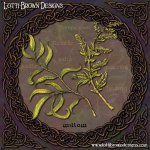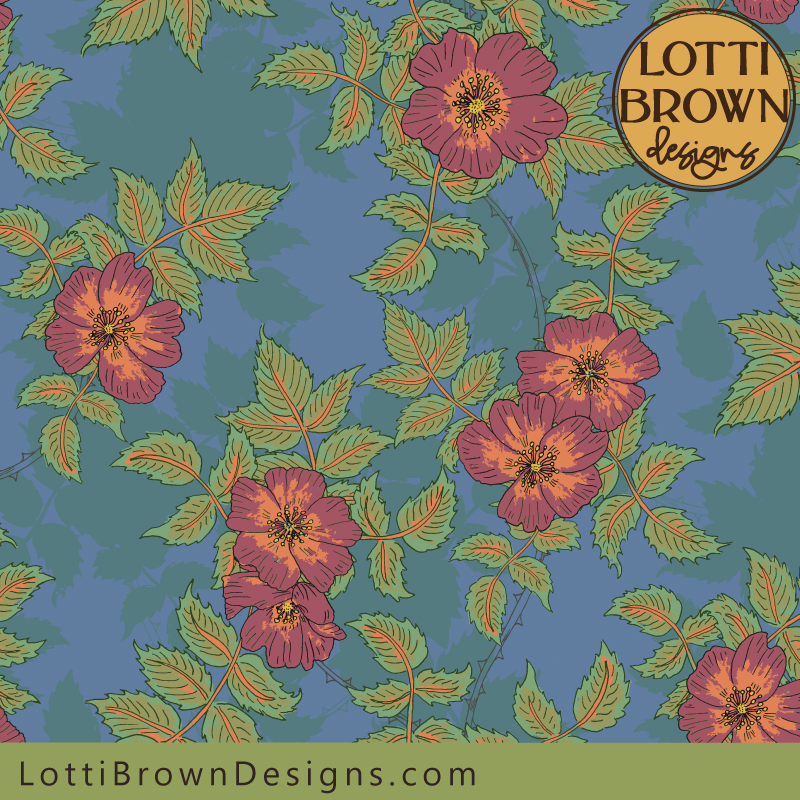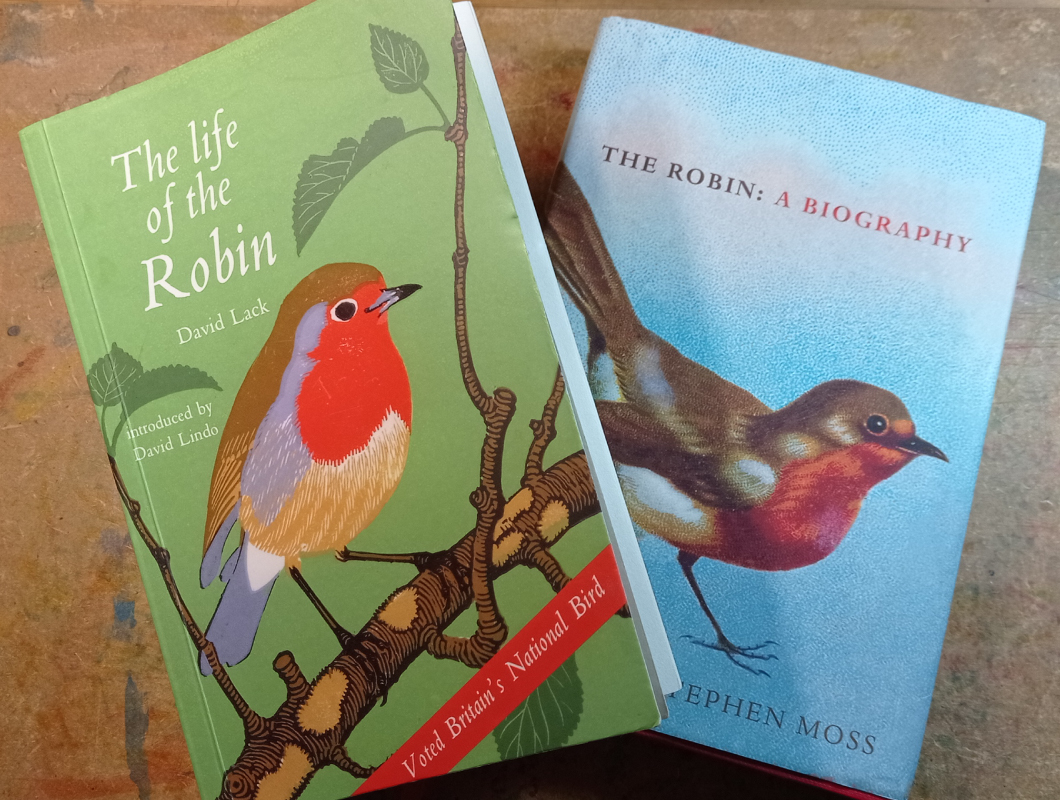SPRING 2025 - I've just completed a WEBSITE REVAMP! Everything is still here but may be in a slightly different place where than you left it and there's also lots of new sections, so if you're having trouble finding something in particular or you spot something that's not working as it should, please do get in touch and I'll do my best to help!

Edith Holden
The Country Diary of an Edwardian Lady
- Home
- Nature Journaling
- Edith Holden
Be inspired by Edith Holden and her gorgeous nature journal published as 'The Country Diary of an Edwardian Lady' - this is a beautiful nature journal for you to explore with stunning illustrations and Edith's own notes that give us a peek inside the country life of an artist from more than 100 years ago...
Learn:
- Who was Edith and what was her Country Diary
- Why read her Country Diary
- How to get inspired (and not get discouraged)
- Distinguish between her two nature diaries
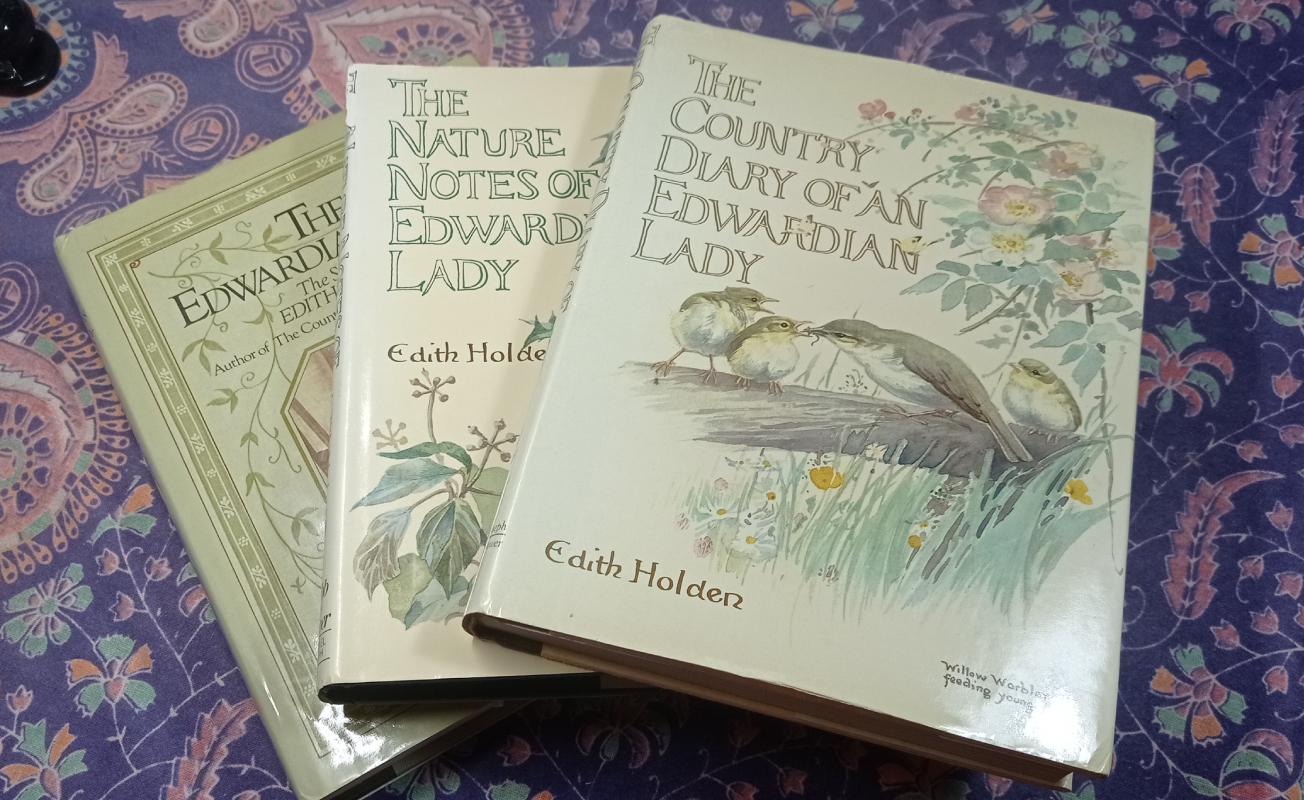 Edith Holden's nature journal books
Edith Holden's nature journal books
Edith Holden and her 'Country Diary'
I wanted to share The Country Diary of an Edwardian Lady with you as it’s such a beautiful and classic example of a nature journal and very inspiring.
You’ve maybe seen images from this book on fabrics, stationery, or craft papers. When I was a child in the 1970s and 1980s in the UK, The Country Diary of an Edwardian Lady was incredibly popular – it was everywhere – and while not quite as mainstream today, it still has a following and an iconic status.
If you haven’t come across The Country Diary of an Edwardian Lady before, this is a book, published in 1977 as a facsimile of Edith Holden’s 1906 nature diary, which she had entitled ‘Nature Notes for 1906’.
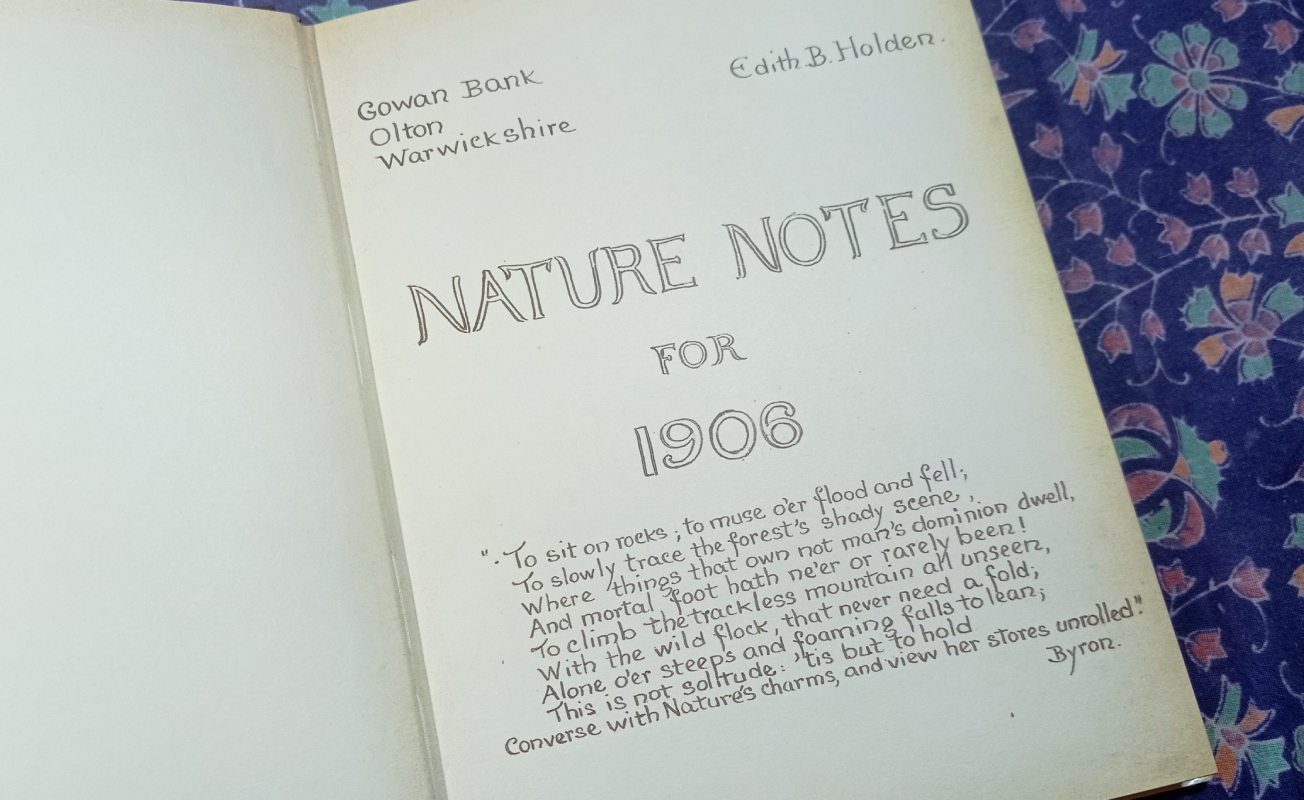 The 'Country Diary' book is a facsimile copy of Edith's nature journal which she entitled 'Nature Notes for 1906'
The 'Country Diary' book is a facsimile copy of Edith's nature journal which she entitled 'Nature Notes for 1906'Edith Holden was an artist and illustrator, and a keen nature lover. It was actually quite common for Victorian and Edwardian ladies to sketch and paint nature and keep nature diaries. What, I think, makes Edith’s Country Diary so special is the fact that she was a trained and working artist and illustrator.
She attended the Birmingham School of Art from the age of the 13, the respected Municipal School of Art with a year training with an artistic mentor at the art school at Craigmill in Scotland. She regularly exhibited at the Royal Birmingham Society of Art and worked as a book illustrator.
In 1906, the year Edith produced her Country Diary, she was employed in a local school teaching art, helping her pupils keep nature diaries with drawings and paintings. She collected specimens for her class and painted them in her own diary, too, leading me to wonder if the diary was used as an exemplar for her pupils.
In 1907, the following year, Edith used her paintings and notes from her 1906 Country Diary to prepare a calendar for ‘The Animal’s Friend’ magazine, from the National Council for Animal’s Welfare.
Edith’s ‘Nature Notes for 1906’, also known as ‘The Country Diary of an Edwardian Lady’, is a beautiful book. As a reproduction of her diary, with her neat calligraphic handwriting and occasional crossings-out, it’s as close as we can get to a peek inside her personal nature journal, and into her life – and it makes it feel personal and intimate.
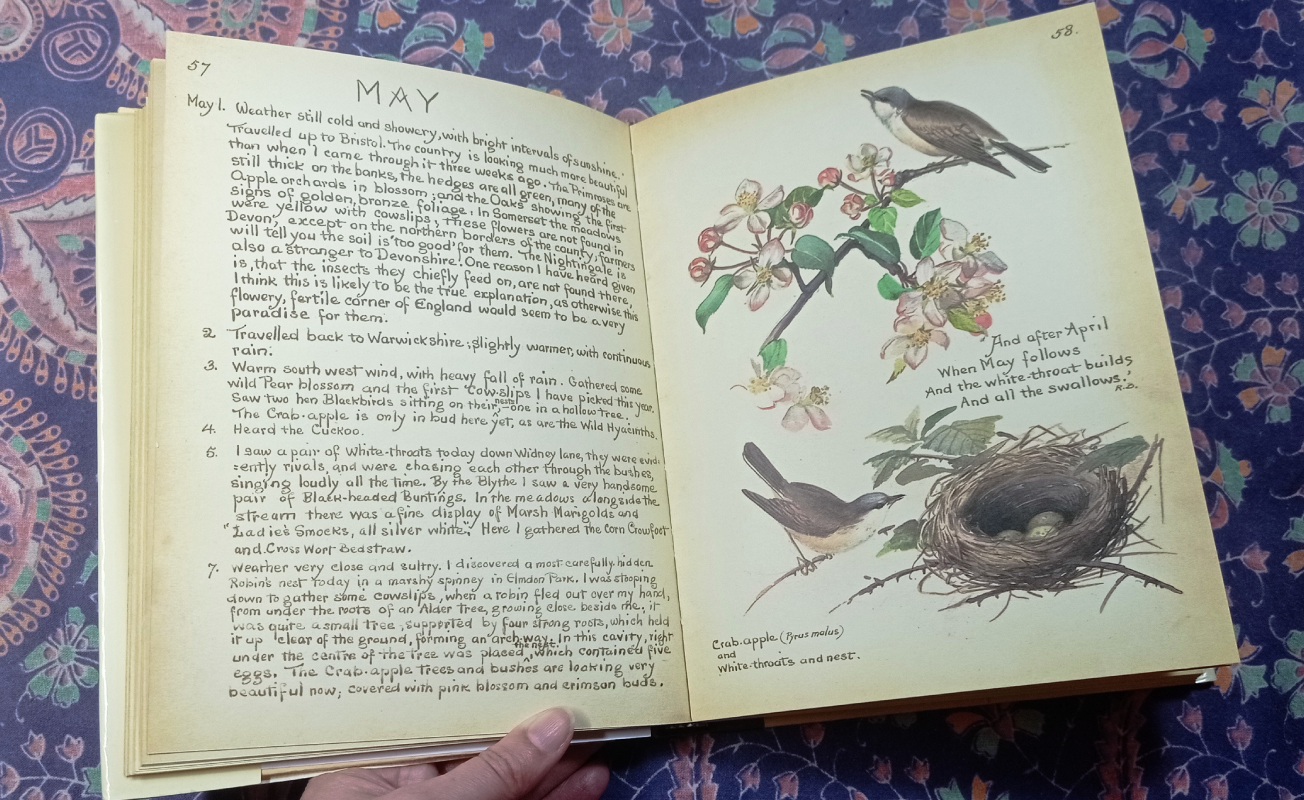 Showing an example page with her hand-written diary and illustrations
Showing an example page with her hand-written diary and illustrationsWe can read her personal notes, noting the weather and trips into the countryside, finding a plethora of flowers, berries and birds to illustrate. It’s the beautiful paintings that are the real attraction of the diary, with delicate and accurate paintings of the quality you might expect of a practiced and accomplished nature illustrator, often accompanied by quotes, sayings and poems reflecting the seasons.
Edith’s Country Diary is exquisite and a gorgeous inspiration for a keen nature journaler. If you do feel inspired by her nature journal, there’s also every chance you’ll feel a bit discouraged, too, at the beautiful paintings and lovely hand-written texts. I feel it too!
But please remember, this is the nature journal of a seasoned professional illustrator. These are not quick sketches. This nature diary took time and the page layouts are planned and much care has clearly been taken over the execution of the paintings and accompanying text.
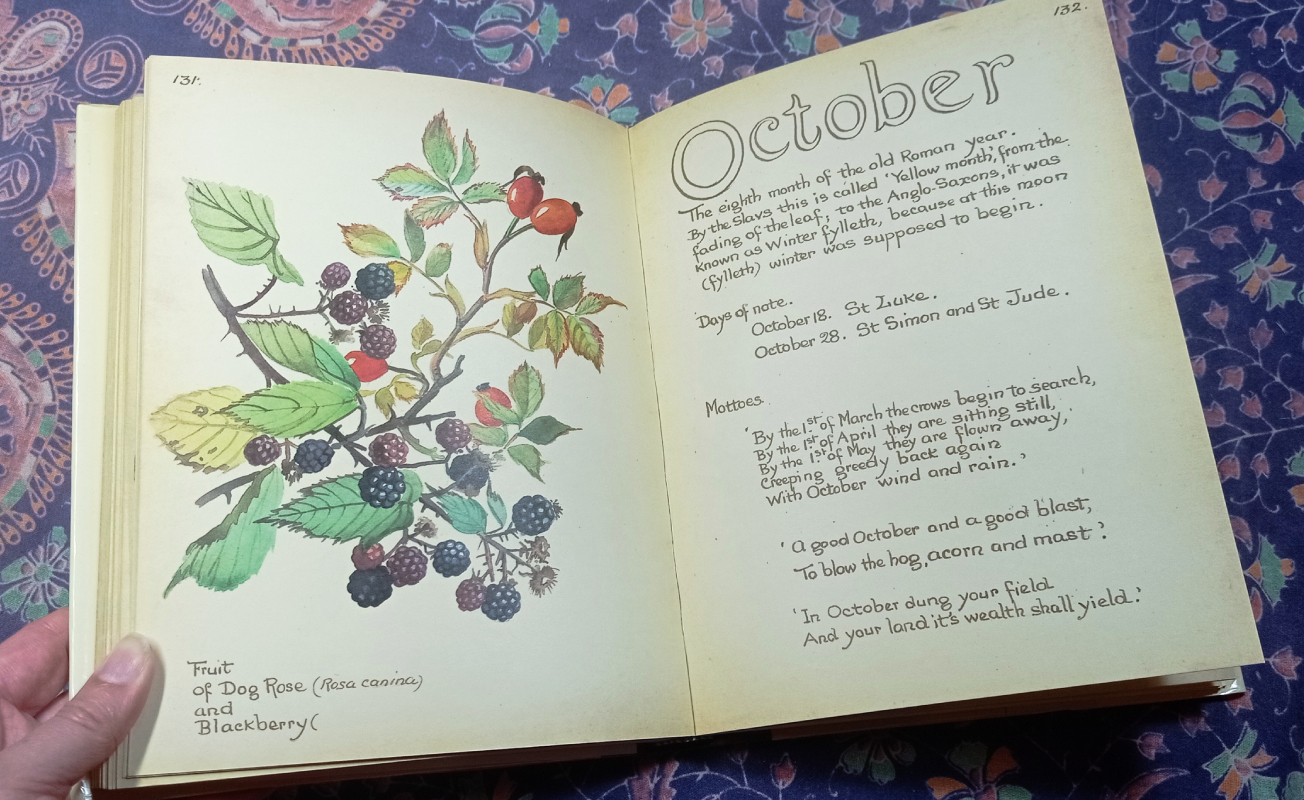 Showing her beautiful illustrations and meticulously planned pages
Showing her beautiful illustrations and meticulously planned pagesWe can only speculate as to her motivations for creating her nature diary – as inspiration for her pupils who were making their own nature diaries as part of their studies. Perhaps as artistic references for her own future artworks and illustrations – we know she used the work from this notebook for works in future years. Or perhaps, it was just for her own personal pleasure as a keen naturalist. Or all of these, maybe!
We know that Edith continued to have an interest in nature right up until her death in 1920. She sadly drowned in a backwater of the Thames river near Kew Garden Walk while trying to reach chestnut buds overhanging the water and fell in.
Be Inspired by Edith Holden
Edith Holden’s Country Diary is, simply, a beautiful book to own. The artwork has a certain elegance of style that makes you love it. Reading the text is a view into a personal world and a life lived around the rhythms of nature – winter storms and summer sunshine, fields and woodlands which, to modern eyes, seem simply teeming with wildflowers, butterflies, moths, birds and all lovely things.
It certainly conjures up an idyllic countryside life of yesteryear with meadows filled with wildflowers. It does give me a certain sense of nostalgia - around a life of more than 100 years ago that was more centred around nature, a life that I clearly never lived but seems to trigger a nostalgia for my own childhood of the 1970s and 1980s when it still feels like nature was less depleted than now. I remember huge flocks of lapwings as a child and it felt like butterflies were flitting around every other flower.
Much of the nature in Edith’s Country Diary is still familiar - though, common birds, butterflies, and wildflowers that are still here in the UK. Maybe it just requires that we make the effort to get out into nature and notice in the same way that Edith clearly did – and start to fill our own nature journals with our own nature observations.
We can note how Edith has noted the weather, not just locally but nationally and writing about records for heat or snow. Her book is also a personal record - she writes about where she's been and what she's been doing. She notes where she finds plants or birds, and also, importantly, notes the behaviour of birds. She also includes poems or sayings or country lore relating to the season or her nature finds – all examples of our human relationships with nature and the natural world around us which are so valuable and which we can also include in our own nature journals.
We can easily be inspired to want to create beautiful paintings like Edith Holden – a noble endeavour – do just bear in mind the months and years of practice and hours of time it takes to firstly gain the skills and secondly create such gorgeous artworks. If you have the time and inclination, by all means do go for it! But if not, don’t let it put you off creating your own quick sketches and drawings in your nature journal – the process of looking and creating is valuable in itself, and when we nature journal, we try to be guided by that and not getting caught up in how it looks.
Your drawings are valuable whether or not they end up as pretty pictures!
Equally so, Edith's notes are written in beautifully neat hand-writing in calligraphic style - this looks gorgeous and makes her book a real treasure, but this must have taken a long time to do and while you can imitate this if you choose, it's not necessary in your nature journal - your own nature journal is a book for you and it's the process of connecting with nature that's important and not how your journal looks!
A Second Edith Holden Nature Diary
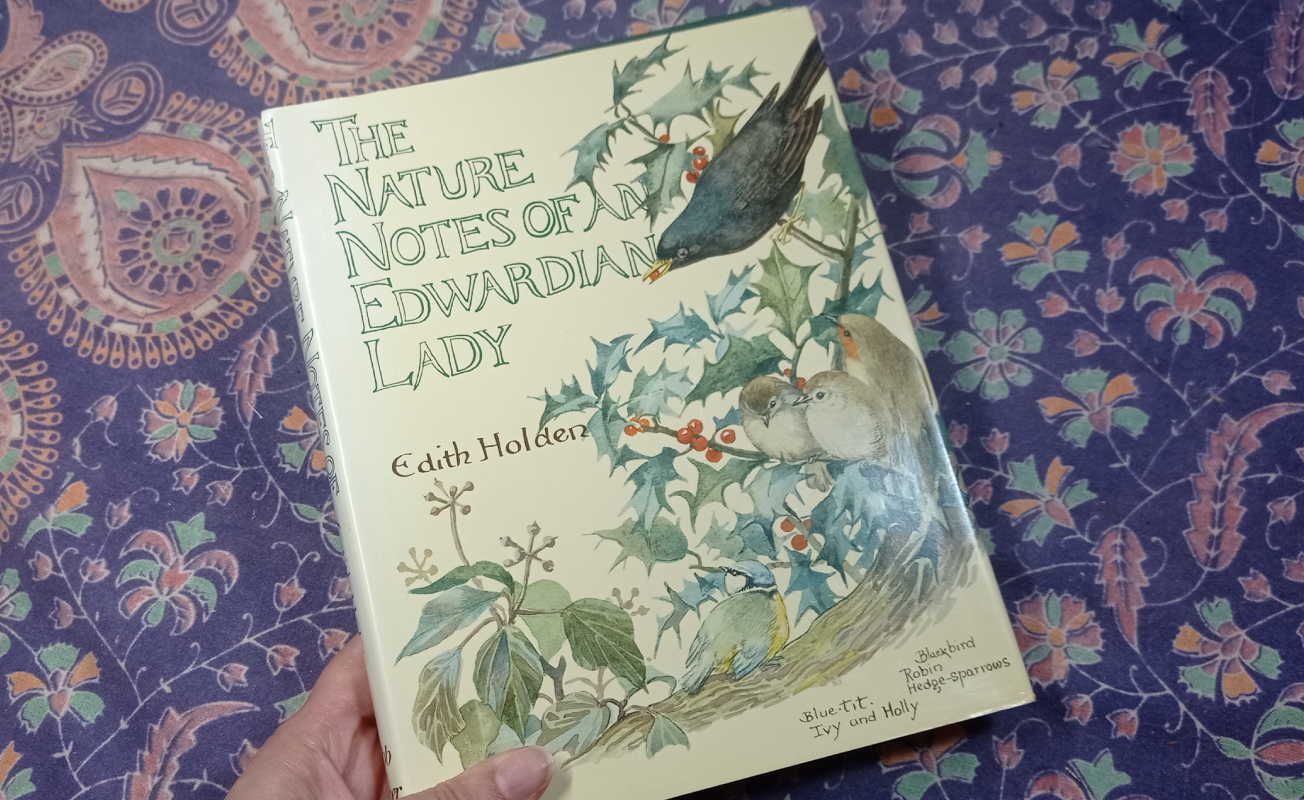 'Nature Notes of an Edwardian Lady' - Edith's nature diary for 1905
'Nature Notes of an Edwardian Lady' - Edith's nature diary for 1905Edith Holden did actually create a further nature diary. I didn’t realise this until I started looking into The Country Diary of an Edwardian Lady and the life of Edith Holden herself - I had assumed this second diary was just the first with a new cover (it's not).
The famous ‘Country Diary’ was for the year of 1906, which she called her ‘Nature Notes of 1906’. There is also a further publication, called ‘The Nature Notes of an Edwardian Lady’ which shares the contents of a similar, but less finished, nature diary for 1905. This came to light after the Country Diary was published and was published itself in 1989.
The ’Nature Notes’ book is very much along the same lines as Edith Holden’s Country Diary with stunning paintings and illustrations of nature in a similar style – but where the Country Diary has the text all written out neatly in Edith’s hand-written calligraphy, the text in the Nature Notes is typed - as the diary was found in an 'unfinished' state (which I'm assuming to mean not neatly presented in beautiful handwriting like the 'Country Diary').
The type-written notes do lose a little of the personality and charm compared to the Country Diary, but if you’re a fan of the Country Diary, you’ll still get a lot out of the Nature Notes book too - and it does go to show that a special effort is needed to present a nature journal so beautifully as Edith has in her Country Diary.
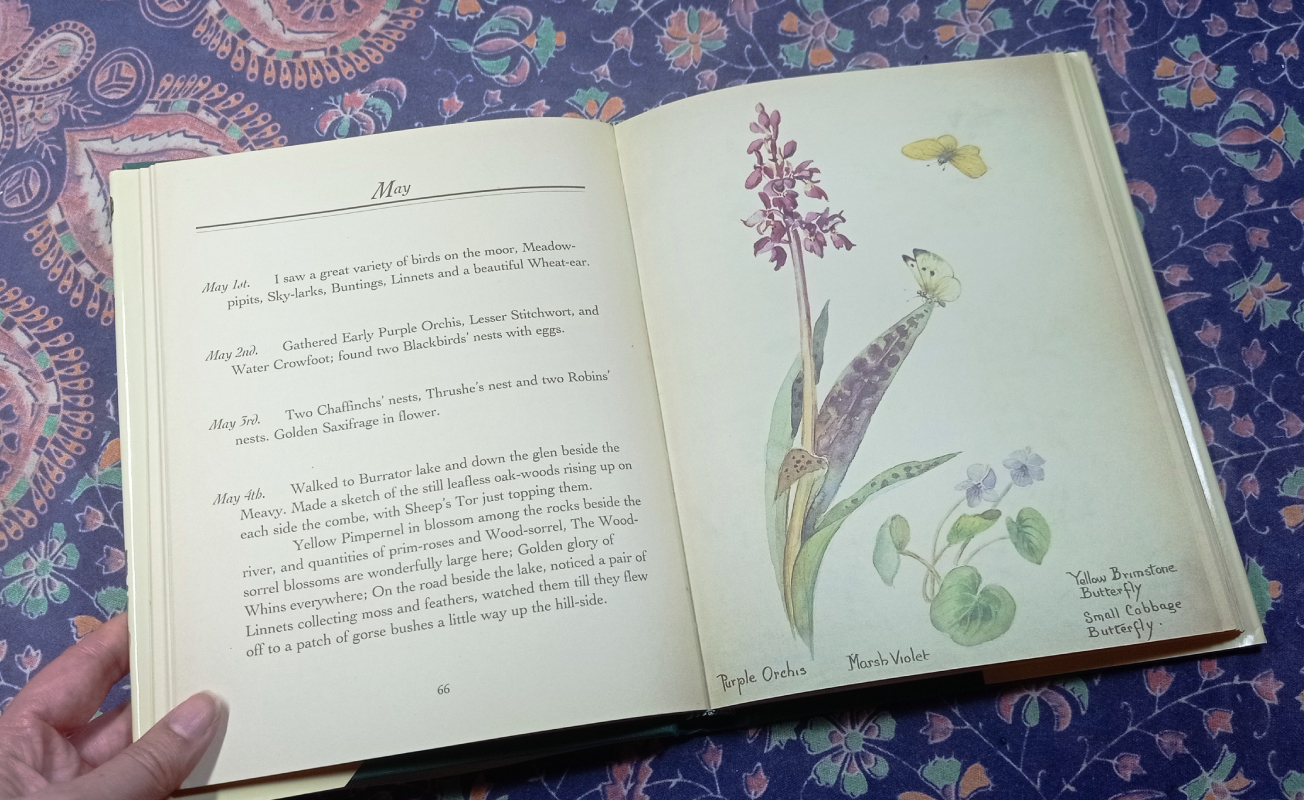 Edith's 1905 Nature Notes of an Edwardian Lady were left in an 'unfinished' state and so her notes are type-written by the publisher
Edith's 1905 Nature Notes of an Edwardian Lady were left in an 'unfinished' state and so her notes are type-written by the publisherBoth books are currently available second-hand from Amazon, with prices ranging from quite reasonable to very pricy!
Learn More about Edith Holden
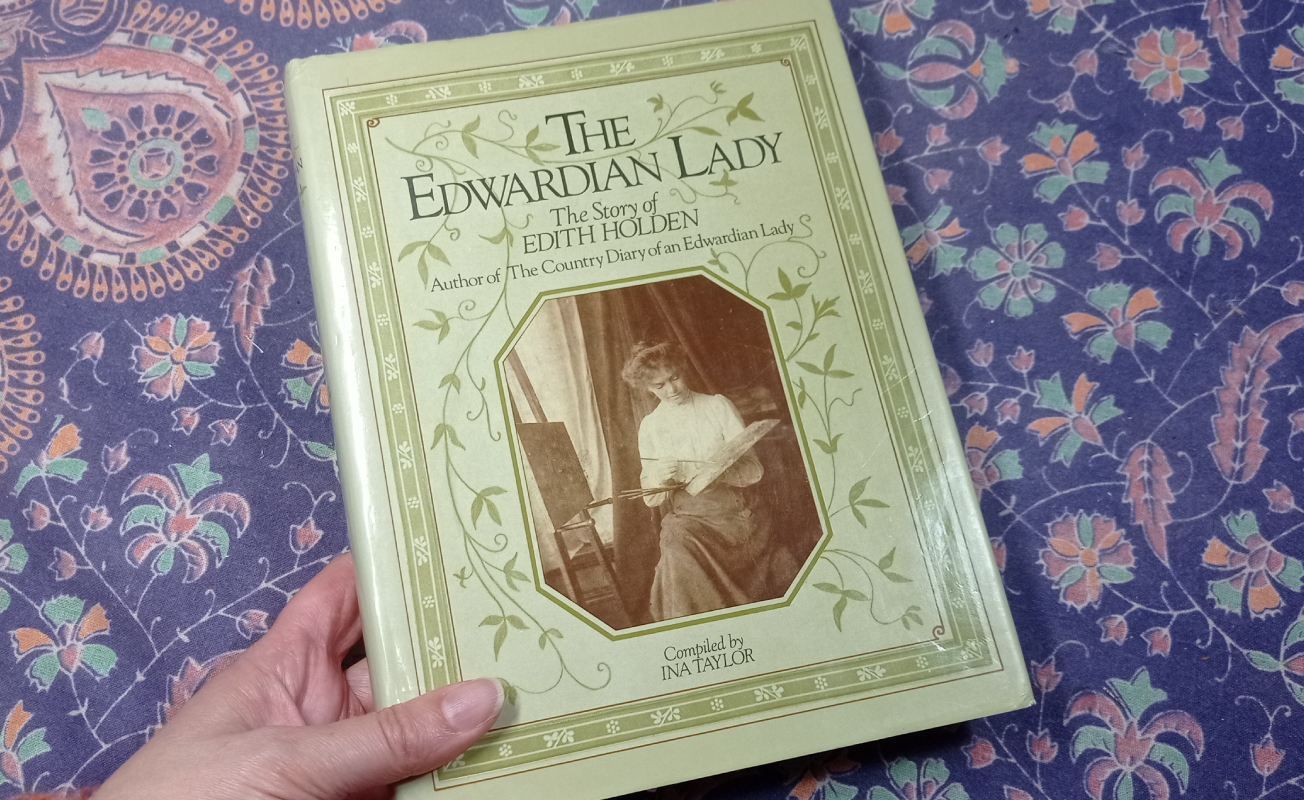 A biography of Edith Holden, compiled by Ina Taylor
A biography of Edith Holden, compiled by Ina TaylorAs well as Edith Holden’s Country Diary of an Edwardian Lady and Nature Notes of an Edwardian Lady, I also consulted ‘The Edwardian Lady – the Story of Edith Holden’ complied by Ina Taylor to find out about Edith’s life and background.
The book was an interesting read and made a good companion to Edith’s two nature diaries. There was quite a lot about Edith’s family – her father, mother, and her artistic sisters – and while I felt I would’ve liked to read more about Edith herself, her background, position in life, and family support and experiences, including the artistic projects she worked on jointly with her sisters are all a part of her life story. It was interesting to see how highly skilled Edith was as an artist and illustrator, and how the work she is now famous for is actually a small part of her artistic output.
If, on reading her Country Diary or Nature Notes, your curiosity is piqued into who Edith was as a person, 'The Edwardian Lady' could be a perfect accompaniment. You’ll learn about her artistic education, the trips to took to Scotland, Devon, and other parts of Britain, and the lifelong friends she made and corresponded with. You’ll also learn about her career as a successful artist and illustrator, all of which I found very interesting.
The book itself has lots of illustrations, from family photos to Edith’s sketches, notes, paintings and illustrations. It’s a very interesting read, but if you’re looking for more of the Country Diary paintings, these are few and far between.
End Thoughts...
If you’re a keen nature journaler and love art, Edith Holden’s ‘Nature Notes for 1906’ published as ‘The Country Diary of an Edwardian Lady’ is a must-have for your bookshelf. It’s simply a beautiful book and can provide an inspiration in both words and pictures – just don’t let yourself get too intimidated by those exquisite artworks!
For me, the ‘Country Diary’ is a better book than the ‘Nature Notes’ simply for the charm of Edith’s hand-written text. So if you only want to get one, get the Country Diary first. Then, if you adore it, get the Nature Notes too!
If you want to find out more about Edith Holden’s Country Diary, listen to this short interview with Rowena Stott (below). She's Edith’s great-niece, who ended up with Edith’s nature diary and cherished it through her childhood, before getting the opportunity to publish it and share it with the world...

If you're interested in nature journaling and want to do it for the process of feeling connected with nature for relaxation, enjoyment and well-being without getting caught up or intimidated by making perfect pictures and pages, check out my Imperfect Nature Journaling course for exercises and prompts to get you journaling in your own best style...
Read more of my nature book reviews here...
Find out more about nature journaling here...
Online Nature Journaling Course
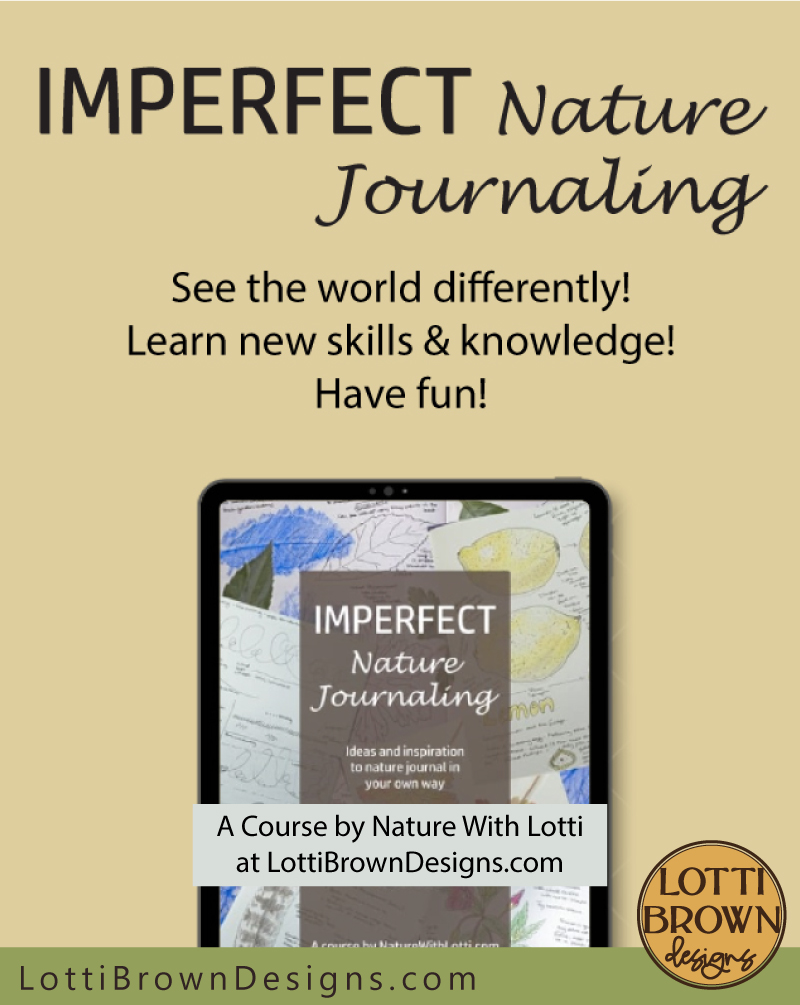
If you'd like to explore nature journaling more, please consider joining me for my 'Imperfect Nature Journaling' online course - I've called it this to remind us to nature journal for the process of connecting with nature to feel good and not to put pressure on ourselves to create pretty pages which can quickly ruin the fun and the benefits...
It's a series of 20 lessons which are great exercises that you can do in your own nature journal to help you try out different ideas and techniques.
This will help you get the most out of your nature journaling sessions and understand what style of nature journaling is the best for you personally.
If this sounds like something you might like, you can find out more about the course here...
Want to keep in touch?
Sign up below for my free email newsletter...
My newsletter is usually sent out once a month (at the end of one month or the start of the following month) and you can unsubscribe any time...
Sign up below...!
Recent Articles
-
Willow Tree Symbolism and Celtic Willow Art
Apr 11, 25 05:43 AM
Explore willow tree symbolism and meaning - Celtic willow art and printed products... -
Wild Dog Rose Pattern & Products
Apr 07, 25 06:12 AM
Pretty dog rose pattern and products in a nostalgic heritage style recalling pretty hedgerows of flowers... -
British Robin Book Recommendations
Apr 04, 25 06:26 AM
My British Robin book reviews and recommendations - learn about Britain's favourite bird...
Follow me:
Share this page:


